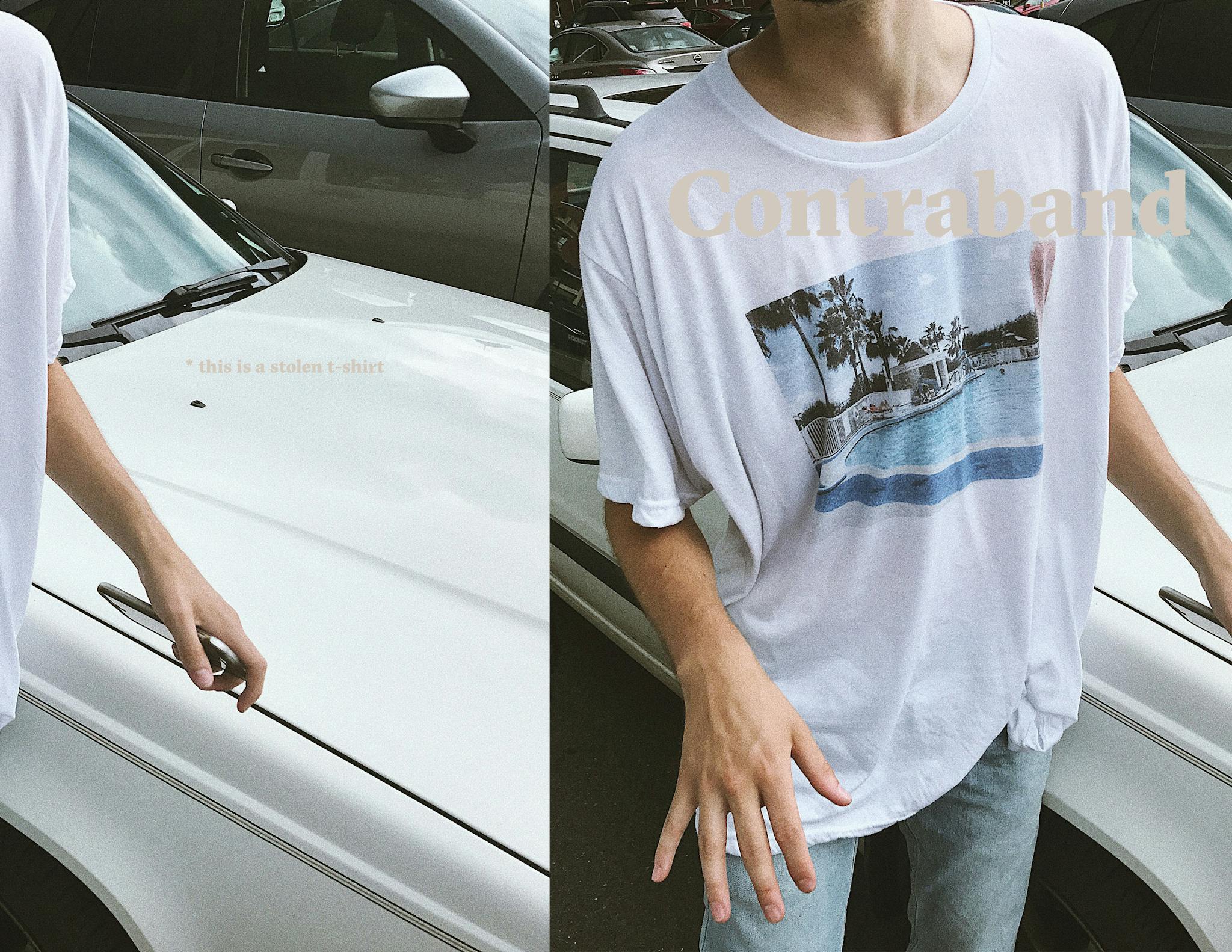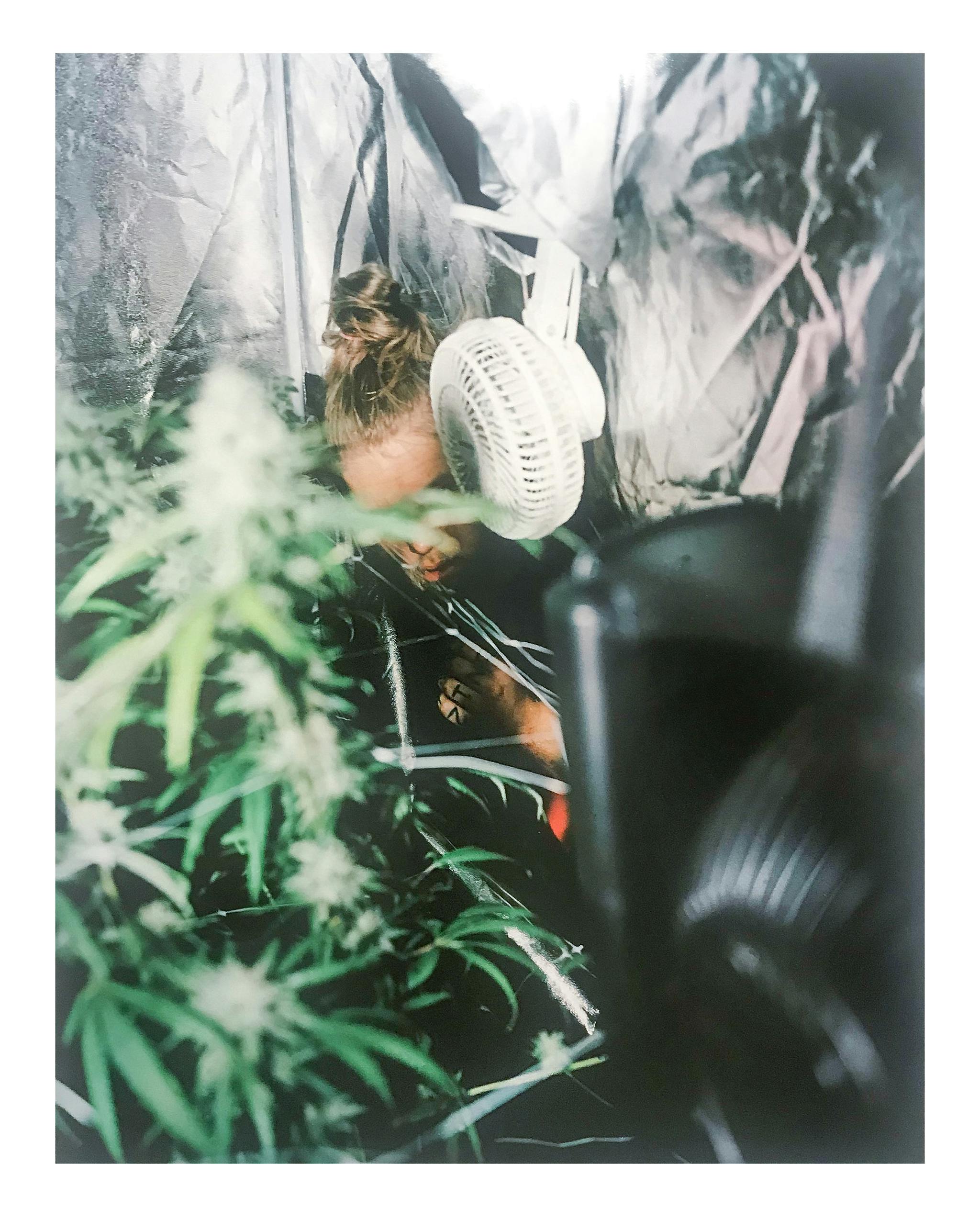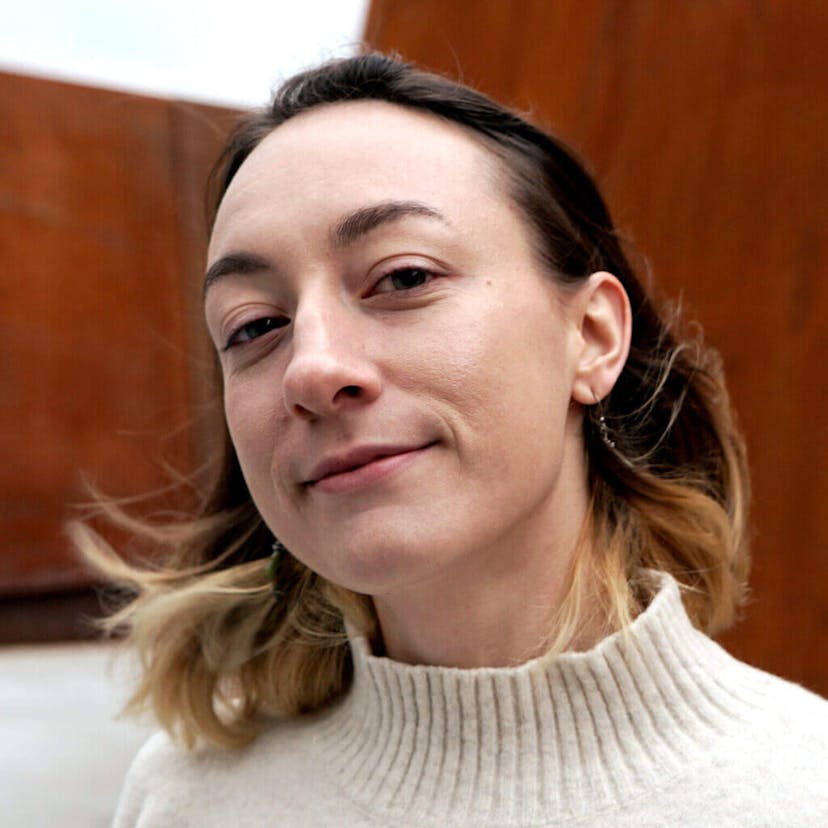Fort5 started out of a realization that the “in the future” prospects of running a gallery was actually a “why not right now” possibility; the space converts from an apartment home into a gallery for one night in order to showcase the work of local artists in relation to a curated theme. In a city where students flock to for the abundance of colleges and art programs and then move to NYC as soon as they graduate, there is a need for spaces that promote an accessible involvement and dialogue within an arts community and exist outside of the school boundaries. I met with the co-founders, curators, and current undergrad students Pat and Julia to speak about the establishment of this space and the most recent iteration with the theme “Contraband”.
How did the decision to create this space come about?
P: Decision to make the space came out of frustration and dissatisfaction with both of our schools’ academic program’s lack of experimentation incorporated into their curriculums.
J:I think Fort5 started out of dissatisfaction with not only our school curriculum, but for me especially, dissatisfaction with the way the art world is being operated. Galleries are shutting down all over nyc/the country, the culture around where art is bought / shown are changing rapidly. I expressed a big interest in wanting to open a gallery space “when I grow up” that broke those problematic parameters, and Pat suggested we shouldn’t have to wait. If we have a space and a network of creative people, why not use it?
What challenges were expected in creating an apartment gallery and how have you addressed or changed in your third show regarding these and unanticipated troubles?
P:The challenge has always been spatial constructions. Moving all of our furniture and decorations into all of our rooms in the apartment has helped mostly. A downfall is people being packed into the space can take away from a focus on the art. Keeping the gallery open as a gallery is also difficult because we live there, when there is a show everything else from the apartment is stuffed into our sleeping spaces. This was our third show, and really with every show we are able to further iron out kinks/frustrations with these restrictions. There’s no real way to combat the space problem further without expanding into a rented space or something.
J: The first show, “Junkspace” was the hardest one without a doubt because we had to create an infrastructure and organizational method, while trying to brainstorm everything we might need to do in preparation, all the while not knowing if it was going to work or be a bust.
What inspired the theme of contraband and how did people who submit interpret this theme and to what extents?
P: Julia was the mastermind behind this theme.
J: A lot of the inspiration behind this theme comes from rewatching the tv show Breaking Bad. We have kept the theme more vague and open to interpretation after the first show, one of the biggest issues with the first show was people understanding what the theme, Junkspace, was. Keeping it more vague – such as with the last show’s theme Of Motion, we have more submissions and interest. I think that with the theme contraband, it was hard for some people to get past their own initial ideas/mental imagery of what contraband would be (ie drugs) – but I also think that’s what made this theme so interesting. Pushing past that initial impression of what “contraband” means and tapping into what it could mean. I’m so impressed with the submissions.
Would you consider the setting itself a part of the contraband theme of the show? Boston, and in particular student housing areas like Allston and Mission Hill, have a history of a ‘basement’ music scene that has to constantly contend with sound and crowd violations; have you experienced any police intervention with these art shows?
P: We hadn’t considered the setting being a part of our last show’s contraband theme, but enjoy the association regardless. We’ve never had to deal with the BPD, and in my eyes, it’s really just a social gathering of people who are interested in art. Similar to a super bowl party, but instead of tom brady, people come for the works on the walls.
J: No run ins with the police yet, knock on wood. I have to remind myself that it’s always a possibility though.
How have you reached out to local artists and what kinds of responses have you gotten? Do you adjust your reach depending on the theme of the show?
P: Our way of reaching out has been mostly by word of mouth. Boston Art Review has helped us reach people that we wouldn’t have been able to without it. People have been receptive and open to the idea of displaying their works, and no one has really shot us down (from my knowledge). I don’t think we’ve adjusted our reach based on show themes, but rather rely on the same people to get the word out to people who would be interested.
Openings / showings in a home create a different vibe than in a typical gallery setting. Do you find there is a wider or a more niche range of attendees to these events? Appealing to specifically house-party or art enthusiasts or an overlap of people who enjoy both?
P: I think we are able to both reach a larger, but also smaller, audience because we are students. Attendees end up being people we know, or people we know maybe twice or three times removed (a friend’s friend’s friend). However, these groups of people showing up still tend to be students.
The house setting is interesting because although the space may make it feel more like a house party, curfews are respected without being enforced and no one has ever damaged the art in any of our shows. I think the crowd ends up being a mix of people who enjoy both art and social events. The lack of a storefront / physical gallery space prevents us from keeping it open for the whole weekend (something we’re exploring doing for our next show), or open with regular gallery hours which may appeal to a wider range of attendees.
J: I think there is totally an overlap, but having an apartment full of college aged kids (because those tend to be the people we are in contact with) really adds to the “house party” vibe. With each show the crowd grows and also becomes more diverse in age and background.
Have you found there to be a stronger sense of community and support in student run spaces compared to profit based ‘above ground’ venues? or are there more challenges and the possibility of not being taken seriously when the venue is created out of its program rather than a defined space itself?
P: I think because we aren’t a faceless institution, we do have a strong sense of community at our shows. All of the artists work with us directly, which facilitates a relationship among everybody involved. This can prevent us from being taken seriously, but so far I think we’ve been well received among everybody who has submitted a work to be displayed in our space.
J: I don’t know that Pat has experienced this, but I totally don’t get taken seriously sometimes. I think in the art world sometimes artists can be purists? Or they hold themselves to a really high regard? I’m not sure, but I’m really thankful for the humble people who are interested in working with us and contributing their works outside of their class work / other responsibilities – not only that but for the feedback we’ve gotten as well. People love Fort5, this is a place that is honestly open to interpretation and experimentation and I feel it is rare and appreciated.
What do you see for the future of this space?
P: The future of the space is kind of unknown – as current college students in a rented space, Julia and I don’t know where we will be in a year or two. We plan to continue to hold shows through the end of our current lease, and whether it’s expansion or annihilation of the space, we’ll take it as it comes. Doing this on top of wicked strenuous course loads has been annoying, but ultimately manageable (we’ve managed this many, right?)
Stay tuned with Fort5 for upcoming exhibition information!



